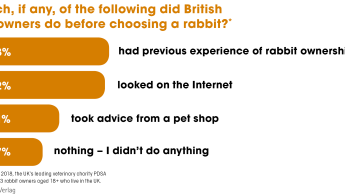

The new European Fish Health Directive will comprise one particular late inclusion that will undoubtedly take many people by surprise. This late inclusion could also pose considerable difficulties for countries that export koi to Europe
The problematic item giving cause for serious concern among many sectors of the industry is the inclusion of Koi Herpes Virus (KHV) as a notifiable disease. Up to now, the main notifiable disease connected with ornamental fish has been Spring Viraemia of Carp (SVC), but KHV has not been included because – among other factors – no universally-agreed protocols have as yet been established. But recently the Office International des Epizooties (OIE) – the world animal health organisation – decided to make KHV notifiable.At the time of writing, there is still no mention of this decision anywhere on the OIE website (www.oie.int), but there soon will be. There are also strong indications that the disease will feature in the next edition of the Manual of Diagnostic Tests for Aquatic Animals which is being prepared.The implications of this decision are extremely wide- ranging and will affect every member of the ornamental aquatic industry who is involved in the export and import of koi. For a start, by making the disease notifiable, there will be a legal requirement to inform (i.e. notify) the relevant fish health authority of any outbreak of the disease. Failure to do so will constitute a serious breach of the law.But things are not as simple as this. Far from it! The disease will, for instance, also be included in the new Fish Health Certificates that exporters will have to sign. However, KHV is only currently listed as a notifiable disease in three countries: Japan, Germany and Australia. So, what about the other koi-exporting countries, which include some major players like Israel, Malaysia, Thailand, Singapore and others? They will have to be able to declare that their fish are free of the disease or, at the very least, that the fish in the particular shipment to which the Health Certificate applies are free of the disease and come from a disease-free farm.So…how do they do this? In the case of SVC, farms need to have undergone a period of monitoring lasting two years, during which no outbreak of SVC is detected. Similar stringent requirements are likely to come into force with regard to KHV.There are other complicating factors as well. For example, in the case of SVC, the disease is notifiable in all countries, making the law universally applicable. But this is not the case with regard to KHV. There will therefore be pressure on all exporting countries that do not currently list it as notifiable (the vast majority) to do so. If everyone does it, then this…
Related articles
Read also

 Menü
Menü





 9-10/2006
9-10/2006











 Newsletter
Newsletter